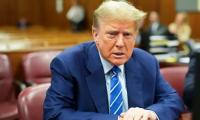The morning of democracy finally dawned on March 17, 2008 with the new National Assembly taking oath. The country passed through tumultuous events in 2007 – the removal of the then chief justice, the Lawyers’ Movement and the assassination of former prime minister Benazir Bhutto – before the elections in February 2008.
The turbulent times, however, continued as the PPP and PML-N coalition government did not last for long. Pervez Musharraf was forced to resign, a global financial crisis erupted with an unparalleled ferocity and oil prices touched $150 per barrel. An economic meltdown was imminent as equities tanked and the stock market had to be closed down. An appeal to the IMF was made for an immediate stabilisation programme.
The economic regime, which was so keenly nurtured and tended for a decade by the military government, was unravelling within months: the exchange rate depreciated by 25 percent; the policy rate was raised to 12 percent, monthly inflation jumped to 22 percent in August 2008 and fiscal deficit was approaching eight percent (double the target of four percent).
The Fund’s programme, approved in November 2008, was a Stand-By Arrangement (SBA) spread over a 23-month period, with financing support of $7.6 billion (500 percent of Pakistan’s quota) and front-loaded disbursements (40 percent disbursed on approval). Staying true to a stabilisation programme, the focus was on controlling the fiscal deficit, building reserves and restoring investor confidence while protecting social spending.
There were few structural reforms. But the reforms on taxation were the most fundamental, envisaging a separation of Customs and the internal revenue wings of the FBR and, more importantly, legislative action to remove all distortions for levying a GST in the value-added mode. However, these reforms were back-loaded.
The performance under the programme started well. However, the focus predictably drifted as the opposition became strident (demanding the restoration of the judiciary) and the demands of the remaining coalition partners became untenable. No sooner had the 18th Amendment and the NFC Award been approved in early 2010 than the process of drift intensified. Economic governance was weak as all key economic offices were reshuffled frequently. The final blow came in the June 2010 budget when the key taxation reform of a new GST law failed to gain approval after one of the coalition partners who opposed the reform exited the government, leaving behind a minority government. For all practical purposes, the programme was abandoned.
The process of reforms thus came to an end. Around this time, the country was also hit by unprecedented floods that displaced a large number of people and seriously eroded the economy’s growth potential. Judicial entanglement, despite the restoration of judges, continued while the executive also refused to comply with some of its directions leading to the disqualification of the prime minister and the election of a new one. The energy crisis was deepening, severely affecting the productivity of industry and exports. Economic management was, therefore, relegated to the lowest priority.
In this disruptive background, the process of privatisation was the most unfortunate victim. The IMF programme did not focus on privatisation. Curiously, the PPP leadership, which in the past had pioneered the notion, developed an inexplicable aversion to the concept. The new government had inherited a near-final transaction of selling the exchangeable bonds against the equity stake in the OGDCL.
A date for final roadshows was around the corner. Ishaq Dar, who briefly served as the finance minister, supported the transaction as it was considered necessary to ward off the impending loss of reserves in the face of rising oil prices. Dar also had the backing of his leadership. But he could not secure the consent of the PPP leadership and was, therefore, forced to drop it.
Naveed Qamar was appointed chairman of the Privatisation Commission. He soon discovered that the privatisation business he knew from his previous stint was no longer in fashion. Instead, a novel idea was introduced that gave employees a stake in the public-sector enterprises (PSEs).
In August 2009, the cabinet approved the Benazir Employees Stock Option Scheme (BESOS) to empower them. The scheme had the following features: (a) transfer of 12 percent of government shareholding free of cost to individual trusts to be established by each PSE; (b) profits on shares will be credited to the trusts; (c) trusts will issue non-transferable unit certificates to employees (with a five-year service); (d) on retirement, unit certificates will be surrendered to the trust/government on due compensation; (e) around 50 percent of dividends will go to certificate-holders and 50 percent will go into a revolving fund.
Some 80 PSEs were expected to join the scheme, with an assets base of Rs118 billion. Soon the banks, PTCL and some other organisations were excluded as their shares were not held by the government or the joint venture partners did not agree, leaving about 100 PSEs with an assets value of Rs100 billion. Although nearly 240,000 employees were to benefit from the scheme, the true beneficiaries were only a few thousands who worked in the most profitable petroleum sector (such as the PPL, the OGDCL, etc) where these workers became millionaires overnight. In 2012, a cap of Rs1 million was set as the maximum annual benefit per employees; only 25 percent of dividends would be distributed and the five-year condition was relaxed.
Hardly any question was raised about the fundamental flaws associated with the scheme. The very idea of giving public assets to a chosen few lacked any legal basis. Mercifully, sensing the danger, the government itself suspended the scheme until further orders in October 2012. The PML-N government maintained that position and refused to revive it.
The employees of the PPL filed a writ petition in the Sindh High Court in 2015. The case was heard until November 2017. In a landmark judgement that was recently announced, the SHC, while dismissing the petitions, held that the scheme violated Articles 154 and 173 of the constitution; the cabinet had no authority in a matter under the purview of the CCI. The court held that public property cannot be disposed of except under the appropriate law; all those benefiting from the scheme should be held accountable under law; and monies in the trusts should be returned to the government. This is how the fate of privatisation fared during the period between 2008 and 2013.
To be continued
The writer is a former finance secretary. Email: waqarmkn@gmail.com
As usual, any such deal, aiming to resuscitate ailing economy, brings to fore urge and resolve to halt further...
A representational showing sticky notes on a board. — Unsplash/FileThere are some common themes from the lives...
Whether the Daanish Schools effort has been able to live up to its principles or not may be debatable
According to the federal government, last year 653,100 people experienced homelessness on a single night in America
Another advantage for Pakistan is the enhanced teledensity and internet penetration
Both media spheres need to dovetail in amplifying the urgency of addressing climate change at the local, national, and...







